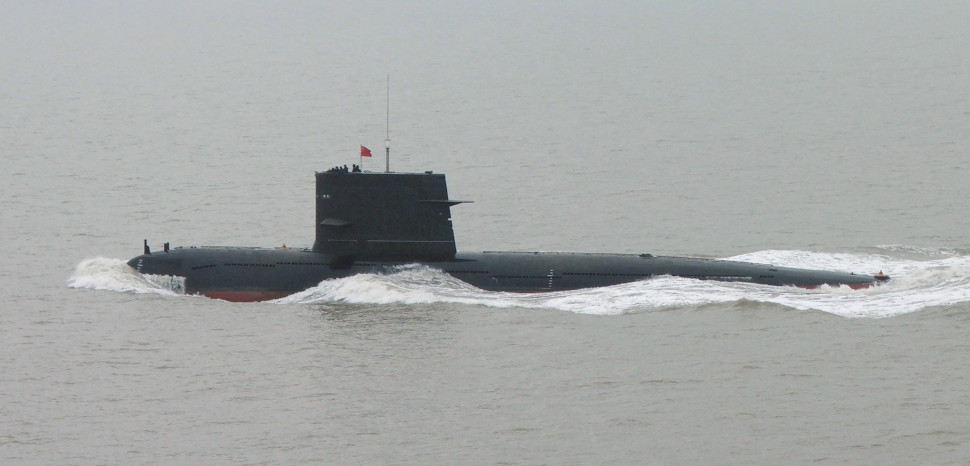The China-Pakistan axis has existed since 1963 when both countries realized that they share a common objective of limiting India’s influence. In the recent past, the axis has only strengthened with initiatives such as the China-Pakistan Economic Corridor (CPEC) and expansion in the strategic maritime relationship. The latest development in this relationship has been the Chinese assistance to Pakistan in augmenting its submarine fleet.
Pakistan is modernizing its naval fleet and is acquiring submarines from China. Reportedly, China launched the first of eight Hangor class submarines at Wuchang Shipyard in Wuhan. As per the deal, China would build four submarines in Pakistan while the remaining four will be constructed by China in its shipyards. Apparently, Germany has refused to supply engines for these submarines and China has to find alternative sources for the engines. However, these submarines are expected to boost Pakistan’s naval capabilities.
The submarine deal is part of Pakistan’s overall naval modernization program and is an indication of the deepening China-Pakistan security relationship. The China-Pakistan relationship is described by both sides as ‘higher than mountains, deeper than oceans, sweeter than honey and stronger than steel.’ The emerging naval dimension of China-Pakistan relations is quite literally taking it ‘deeper than oceans.’ As many countries in the Indo-Pacific region are modernizing their naval capabilities, strengthening the China-Pakistan axis in the maritime domain is part of the same trendline.
The China-Pakistan naval axis is also visible in two other notable developments: joint naval exercises and infrastructure development. In the last few years, as China is expanding its security presence in the Indian Ocean, it is routinely carrying out naval exercises with several countries including Pakistan. The latest iteration of these naval exercises took place in November 2023 in the Northern Arabian Sea, known as Exercise Sea Guardian. The exercises included anti-submarine drills and helped familiarize both navies with each other and build trust. China is also heavily invested in the development of the strategically important port of Gwadar in Pakistan, which is expected to become China’s second naval base in the Indian Ocean after Djibouti.
The India Dimension
Since 2008, China is gradually expanding its naval presence in the Indian Ocean and at any given point of time, there are three to six Chinese warships present in the Indian Ocean region (IOR). China’s research and fishing ships are also ever-present in the IOR. The naval modernization and augmenting of Pakistan’s capabilities would go a long way in building Pakistan as a counterweight to India, China’s main adversary in the Indian Ocean. Along with the military pressure in the Himalayas on India, strengthening Pakistan can also be seen as part of Beijing’s strategy of containing New Delhi.
The US withdrawal from Afghanistan and Washington’s pre-occupations with the wars in Ukraine and in Gaza has created opportunities for China to expand its presence in the Arabian Sea region. The support for naval modernization helps China to expand its influence in Pakistan. Such influence comes at the cost of the United States. As a result, Pakistan has refused to endorse the concept of the Indo-Pacific, which is championed by the United States.
Indian Ocean Geopolitics
The location of Pakistan near the strait of Hormuz and yet outside the turbulent Persian Gulf is an additional advantage. The future Chinese base at Gwadar along with Djibouti and Ream in Cambodia would go a long way in expanding China’s presence in the Indian Ocean. In addition, the shifting domestic politics of countries like Maldives and Myanmar would continue to create possibilities for Beijing to strengthen its Indian Ocean security links. However, in the context of these security dynamics, Pakistan remains a firm anchor which will continue to facilitate China’s presence in the Indian Ocean near strategically important sea lanes of communications (SLOCs).
Apart from the obvious India-centred security calculations, the economic dimension also contributes to the deepening of the China-Pakistan axis. China has invested large sums of money, estimated to the tune of $60 billion, in Pakistan as part of the CPEC. There are doubts about the ability of Islamabad to guarantee security to Chinese projects and nationals in Pakistan as could be seen in a spate of recent attacks. Therefore, it is imperative for China to stay engaged with Pakistan on security matters. China’s continued support to Pakistan, despite its economic troubles, and domestic turbulence, is a message to other countries in the region that Beijing is a credible power and unlike the United States can be trusted to stand with them when required.
China’s energy security depends on the Persian Gulf with Iran and Saudi Arabia as key oil suppliers. For Chinese energy imports, having a presence in Pakistan just outside the Gulf is important. China’s domestic economic growth depends on continued supply of cheap energy. In a world marked by crises such as the wars in Ukraine and in Gaza, energy markets are volatile and China has an imperative to secure its energy supplies. The Houthi attacks on shipping in the Red Sea has also underlined the strategic significance of maritime security in the Indian Ocean. Therefore, the China-Pakistan naval axis would be geared at securing Chinese commercial shipping and energy supplies.
Through the lens of Indian Ocean geopolitics, for China, Pakistan’s naval capability would also help in monitoring regional developments along the Persian Gulf and the northern IOR. China’s security concerns regarding this region range from India’s growing power, instability in the Gulf, to US military presence in the region. In the ever-evolving Indian Ocean geopolitics, the China-Pakistan axis is useful for both sides to address these strategic challenges.
*This article was adjusted to reflect the correct naval base in Cambodia.
Author Bio: Sankalp Gurjar is the author of “The Superpowers’ Playground: Djibouti and Geopolitics of the Indo-Pacific in the 21st Century”




